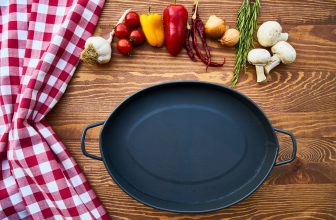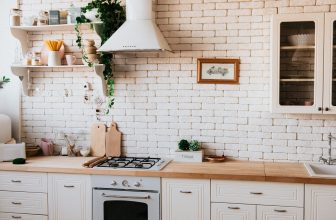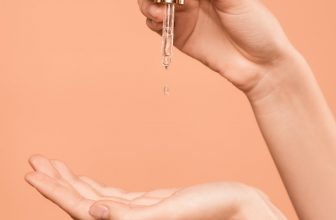Have you got a blockage in the drain and want to try some housewife tips before calling the plumber? There are a lot of housewife tips such as dissolving the clog in the drain with baking soda or with bicarbonate or vinegar. Here we present several different methods to get rid of blockages in the drain in the kitchen, bathroom, and toilet.
Blockage in the drain in the kitchen
In the kitchen and especially in the sink and the drain under the sink, there can be a blockage when you rinse plates and pans, which then creates deposits of grease in the pipes. 2. Then rinse the pans and pans and plates a little extra with hot water, so that the grease that remains dissolves and is flushed further down the pipes.
There are a few things you should keep in mind to prevent these types of grease deposits:
First, scrape and wipe off any grease that can be removed.
Because flushing really hot water at regular intervals can keep the grease out of your pipes. Cold water does not work as well, as it does not dissolve fat.
So if you get a clogged drain in your sink or other drains in your kitchen: flush thoroughly with warm water to see if that can dislodge the clog. Feel free to use a little washing-up liquid, which you pour down the drain before you start flushing with hot water. Dishwashing detergent is a degreaser but not a strong chemical, so it is a good agent to use for kitchen drain blockages.
If it doesn’t work with hot water or with hot water together with a degreasing detergent, then a simple, cheap and environmentally friendly way to get rid of blockages in the drain in the kitchen is to use a sink cleaner. A sink cleaner is a rubber suction plug, attached to a shaft, which can remove clogs in, for example, a sink and a bathtub.
To unclog your kitchen drain with a sink cleaner, do this:
- First, remove everything you can reach, such as hair and other dirt you can wipe or scrape off.
- Then press the sink cleaner firmly against the drain. When the suction plug is flat, pull it away to create pressure that can dissolve the plug.
You can also try pushing the sink cleaner strongly up and down several times to create even greater pressure and movement in the pipes. Finish by flushing water in your sink.
Remember to put a plug in one sink if you have two and also seal other holes in the sink while you use a sink cleaner.
To avoid blockages in the drain in the kitchen, as also mentioned above, you should always avoid flushing down grease and leftover food, so always scrape your plate into the garbage bag and if you have to flush down grease in the sink, do it with hot water. As I said, grease can easily solidify and stick in the pipes for a long time and also cause other debris to stick there more easily, such as food scraps, and then blockages can form in your pipes.
If it does not work with the sink cleaner, you can also try to remove the water trap, which is on the pipes under the sink, to see if it has become blocked there or use cleaning tape, which you can buy at a reasonable cost at hardware stores or other stores such as Clas Ohlson and Jula.
Remember to be careful if you unscrew pipes and water traps under the sink. It is not always easy to get the pipes together in the right way and then it can start to leak from the pipes.
If you do not succeed with your attempts, it may be time to call in a plumber, so you get professional help with your stop in the drain.
Blockage in the drain in the toilet
Blockage in the toilet? It is common to have a blockage in the toilet and the first thing you can try is to flush several times with a few minutes between each flush to see if it can unclog the toilet. It’s okay to try up to ten times and don’t be afraid of it overflowing because the pressure created is often the most effective way to unclog a toilet, but of course, you have to be careful that it doesn’t spill over and onto your bathroom floor.
The second thing you should try if you get a blockage in the drain in the toilet is to pour a bucket of water from a height into the water bowl to create pressure that causes the blockage to release. Feel free to try it a few times. But, only try this if the water bowl is not filled with water – then the toilet will just overflow.
The sink cleaners that are adapted for the toilet are larger than the sink cleaners that are designed for the sink, see the picture above with a sink cleaner for the toilet on the left and a sink cleaner for the kitchen on the right.
A method that may also be worth mentioning to fix blockages in the toilet is to use a cleaning tape, which can be described as a steel wire with a spring at the end of the same wire, which you bring into the toilet and by pressing the cleaning tape, the blockage should disappear. But, keep in mind that the enamel in the toilet seat can be damaged and that it is not easy to find the right balance in the pressure you are going to use.
Then it is important not to flush things down that should not be flushed down. Common items that are flushed down the toilet and cause blockages in the drain are paper other than toilet paper (hand towel or other types of paper towels), tops and tampons, and other disposable items that are used in the bathroom but should be disposed of separately in a smaller waste container such as a small bucket with a pedal which is found in many bathrooms. What should be flushed down the toilet is only what we produce together with toilet paper, nothing else should go down the drain.
Also, remember to flush the toilet an extra time if you are going on holiday. Toilets today are sparingly flushed and if the toilet paper you throw in the toilet bowl is not flushed all the way but gets stuck a bit into the pipes, it can become a clog of dried paper, which if left lying around can become very difficult to remove from the pipes. So avoid those kinds of surprises when you get home from vacation.
If you do not succeed with any of these methods and if you have repeated stops in the toilet, it is probably time to call your landlord, if you live in a rented apartment, or a plumber if you live in a condominium or in a house to get professional help with your toilet.
Stop in the drain in the floor drain
Clogs in your floor drain are usually relatively easy to get rid of as they are almost always caused by hair and dirt from the tub and shower. The first thing you should do if you’ve got a blockage in the floor drain in your shower or bathtub is to clear the drain of hair and other things that may have stuck and are preventing the water from flowing through.
To avoid blockages in the floor drain, it should be cleaned regularly and you can, for example, use a floor drain filter to stop hair and other things from getting stuck.
It is also good to constantly remove the hairs that remain after a bath or a shower to prevent clogging so that the good filter does not become full immediately. Long hair coming down the drain can collect into tails that create blockages, so use a good and hygienic floor drain filter that collects hair residue and also keeps the floor drain free of bacteria and bad odors.
To clean the floor drain, first, remove the strainer (the metal plate with holes that sit above the floor drain). It is usually loose and easy to get up, but it can also be fixed with screws. Then you clean the water trap and remove hair and dirt and stuck and other things. Be sure to put the water trap back so that everything ends up in place again, so that gaskets or other things don’t end up wrong, which can mean that it will start to smell in the bathroom from the floor drain if everything doesn’t close tightly.
If it is not enough to clear the water trap, you can try a cleaning tape or some kind of environmentally friendly clog remover. There are several different types of housewife tips regarding drain blockages and here are two of these “drain blockage tips”, such as ” baking soda drains” and ” drain bicarbonate blockages” :
Unblockers with baking soda and vinegar
Mix baking powder with vinegar and a little salt in a container. Boil water. Pour the baking soda and vinegar mixture down the drain. Pour in really hot water right after the baking soda and vinegar mixture. Now your clog in the drain should be gone.
Clog remover with bicarbonate and vinegar
Pour bicarbonate and vinegar down the drain. Boil water and pour it down the drain. Flush with water and the plug is hopefully gone. Here are more tips on cleaning with bicarbonate
Stop in the drain in the washing machine
If there is a blockage in the drain in the washing machine, it is often due to residues from your clothes and hair and other dirt going down the drain, which over time can turn into a real mess in your drain. Just like with the floor well in the bar room, you can use a filter or strainer, which protects the well in the laundry room. However: do not put anything over the drain pipe itself.
You should also clean your water trap every year to prevent problems with bathroom flooding.
Good luck with your work to unclog the drain!
We hope these tips will help you get rid of your drain clog, so you can avoid having to call a plumber or your landlord, and you can also avoid future clogs by, for example, using a floor drain filter and rinsing dishes with hot water and also flush some extra hot water with washing-up liquid so that your pipes in the kitchen are not filled with grease deposits, which then become clogged in the pipes under your sink or elsewhere in your kitchen.
However: always be careful when trying to unclog the clog with housewife tips and avoid experimenting with chemicals and other things, so nothing gets damaged in your kitchen or bathroom.
And in case of repeated blockages or when you cannot solve a blockage in a drain yourself – contact professional help.







